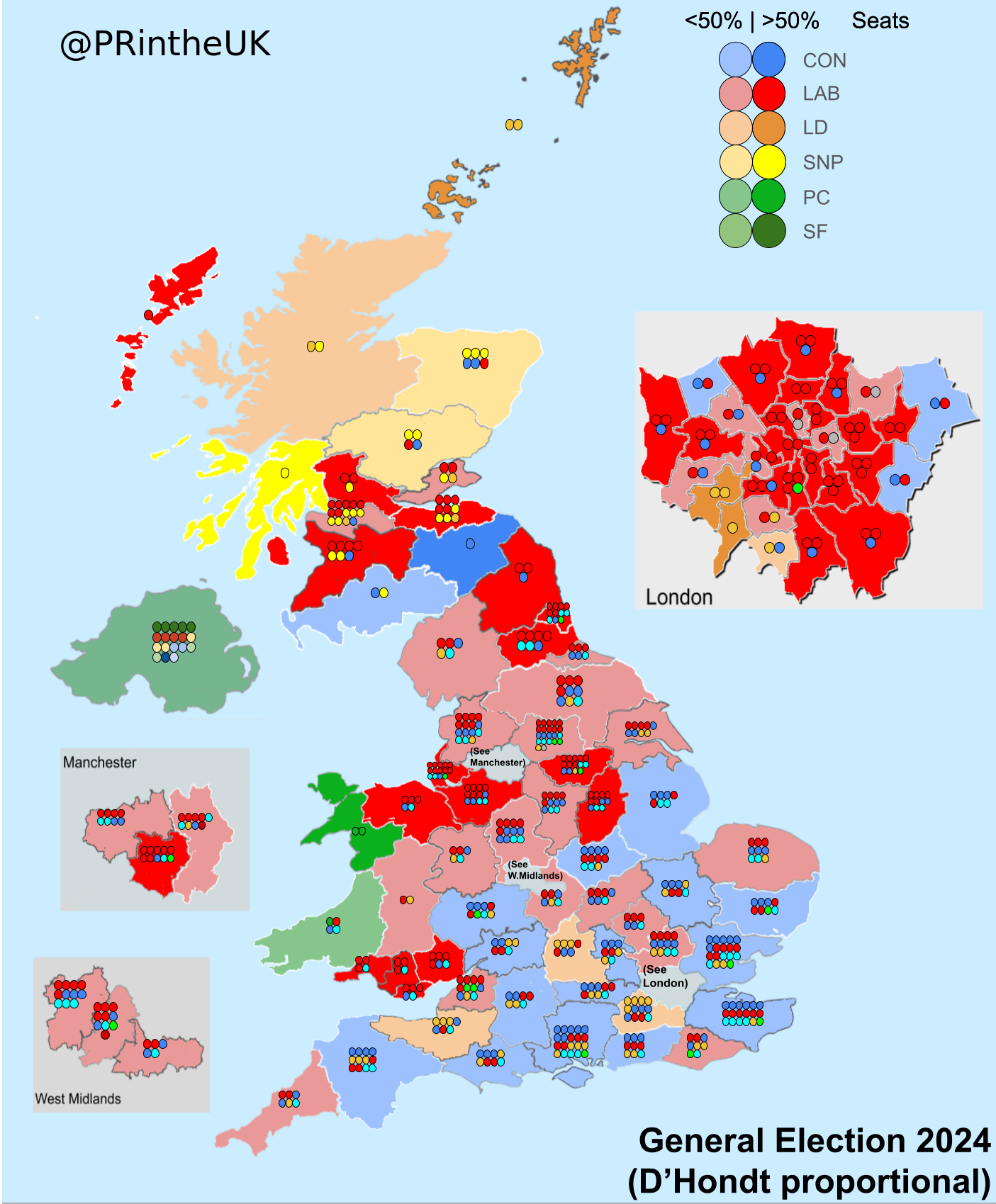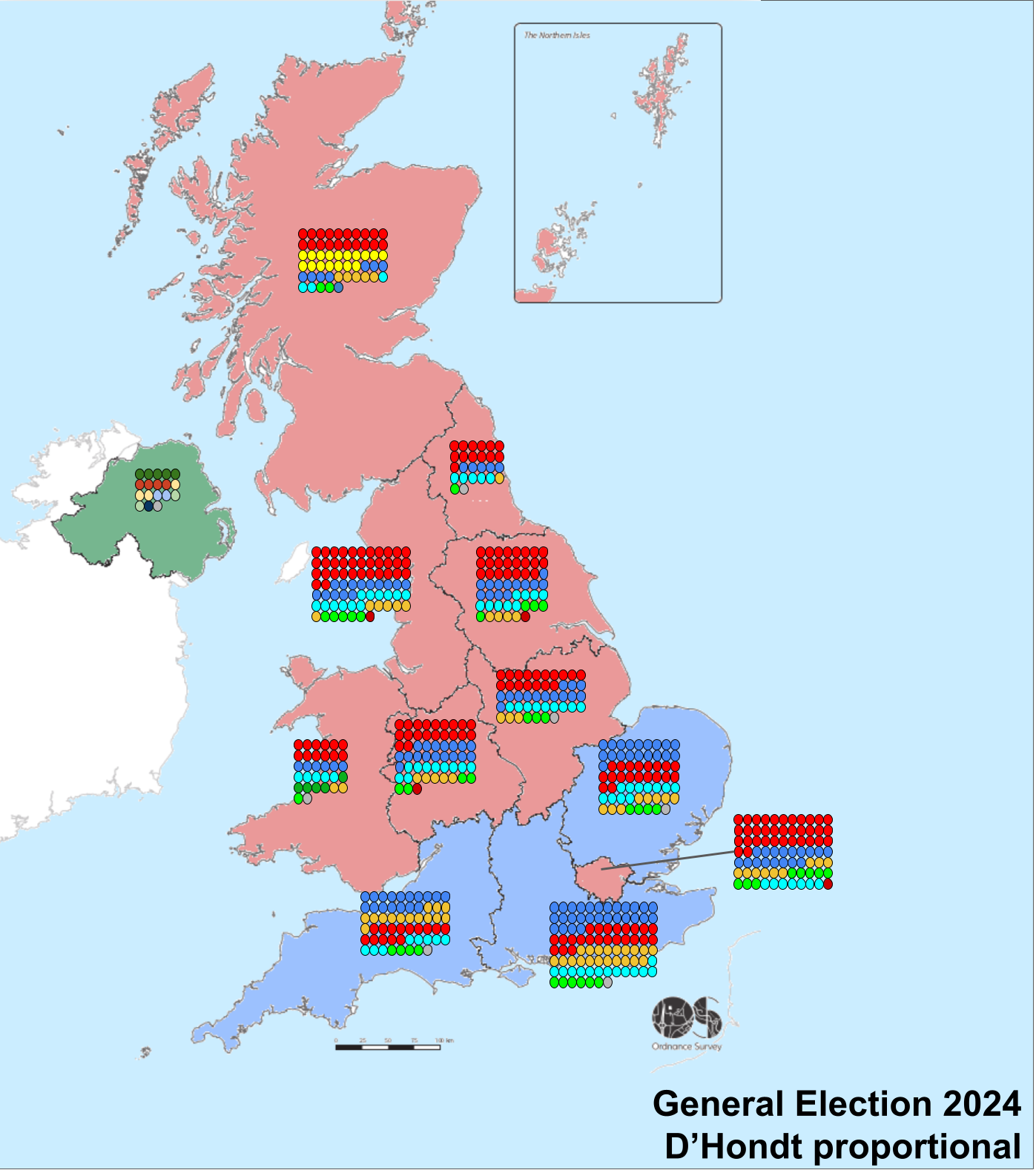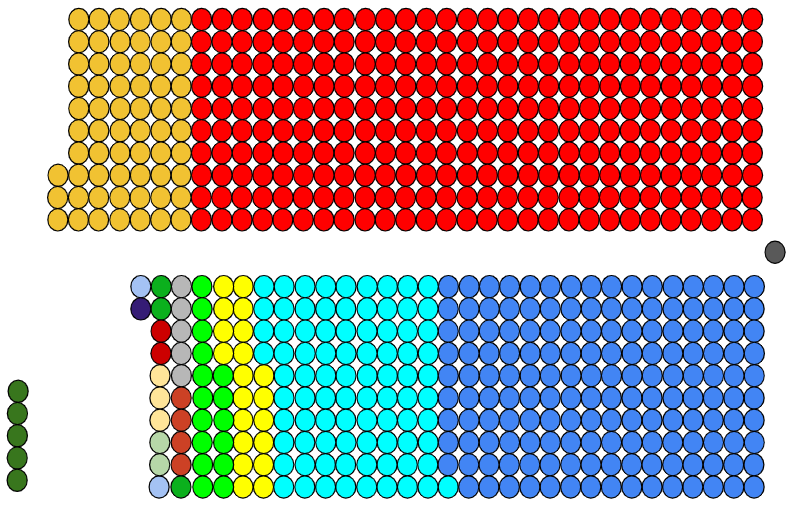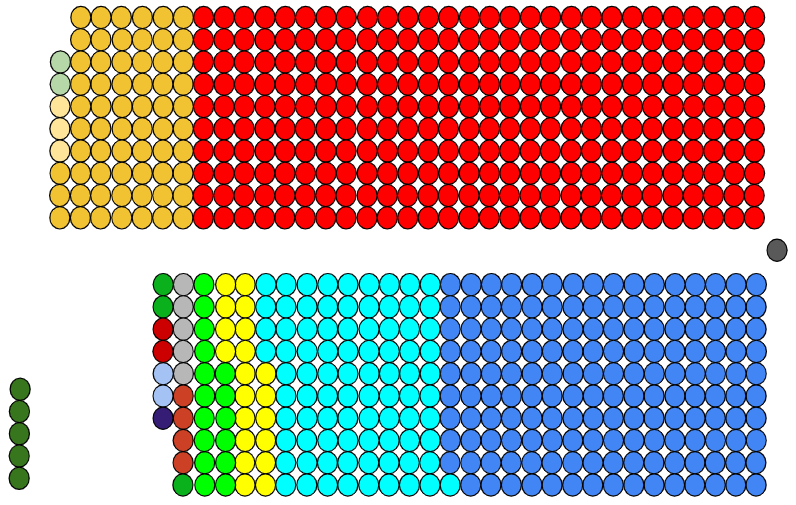2024 Parliament
The chart (template credit: Flourish) below shows the real 2024 General Election results in both the current system ("FPTP") and multiple proportional systems.
Proportionality scores based on the Gallagher Index: FPTP=23.69; DH-County=7.69; DH-Regional=2.05.
An election can be considered fully proportional with scores under 5.
DH-County results are based on the method outlines on the homepage. We also discuss this method in the first video on the topic over on the Youtube Channel! This is similar to systems used in Spain, Portugal, Sweden, Norway, Finland, Denmark, Poland, Brazil, Argentina, Turkey and many many more.
DH-Regional is a similar D'Hondt based method, but the constituencies are now the 12 large regions used formerly in EU elections. These constituencies range from 18 (Northern Ireland) to 91 (South East England) seats.
MMP stands for mixed-member proportional. We half the amount of seats, by combining two or three neighbouring constituencies and the largest constituencies like the Isle of Wight remaining as one. Then for each of the 12 UK regions, the other half of the seats are allocated proportionally taking into account the number of constituency seats in a given region. This is the system used in Scotland and Germany for their parliaments. This system would require two separate ballot papers.
AV stands for the alternative vote, or the instant runoff method. Voters choose their top two preferences. If, in the first round, a candidate doesn't gain over 50% of the vote, second choice votes are counted. This is the system used in Australia. Data coming soon!
Maps
D'Hondt County-based:

Basemap source, MapChart EU NUTS3 map
This election was the least proportional since the Great Reform Act of 1832. Labour have one two thirds of the seats on around one third of the vote. There has been a real upsurge in support for smaller parties, with Reform UK having a good showing all over England. The same has happened for The Green Party, but their support is, perhaps, spread too thinly across the UK to translate the support into multi-member seats at the county level.
Analysis in detail coming soon!
D'Hondt Region-based:

Basemap source, Ordnance Survey
Analysis in detail coming soon!
MMP maps and analysis coming soon!
Government formation
The electoral arithmetic can only realistically result in the formation of one coalition between Labour and the Liberal Democrats: This results in a government with a working majority of 41 (343 MPs out of 650, with five Sinn Féin members not taking their seats).

Arguably, both of these parties could rely on their Northern Irish sister parties for a larger mandate. Labour's allies the SDLP, and Lib Dem allies Alliance add five members to the government benches (or maybe as Confidence and Supply). This results in a government with a working majority of 51. Back in the real world, the SDLP are currently sitting on the government side of the Commons.
